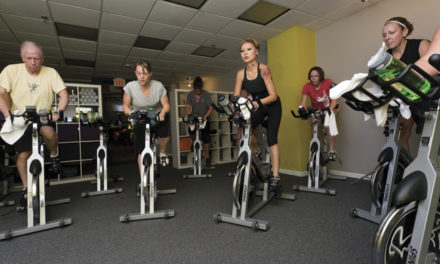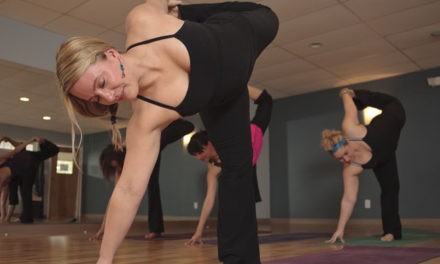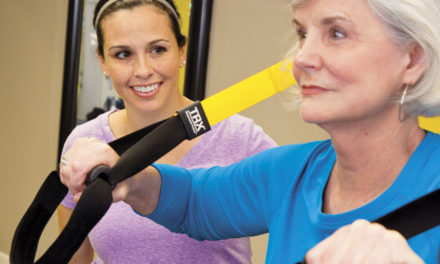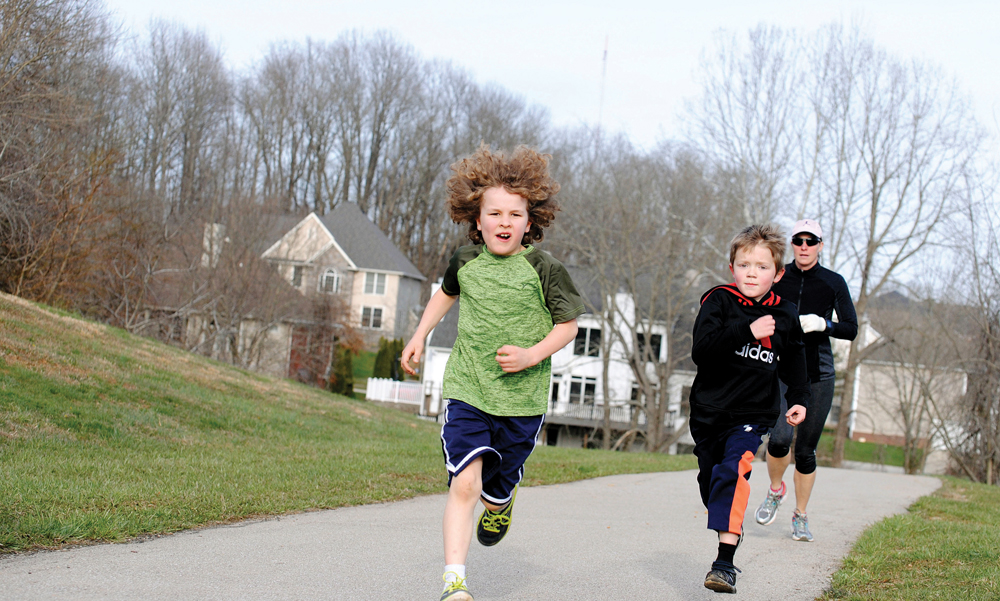
Annie Melick Eakin’s son finishes up his second lap around a mile-long track during Run for Fun practice. Photos by Nicole McPheeters
BY CARMEN SIERING
If you’ve ever thought of tackling one of the 5ks, 10ks, or half-marathons that take place in the fall, now’s the time to start training. Here are eight tips from area experts on how to get yourself off the couch and to the start line—safely.
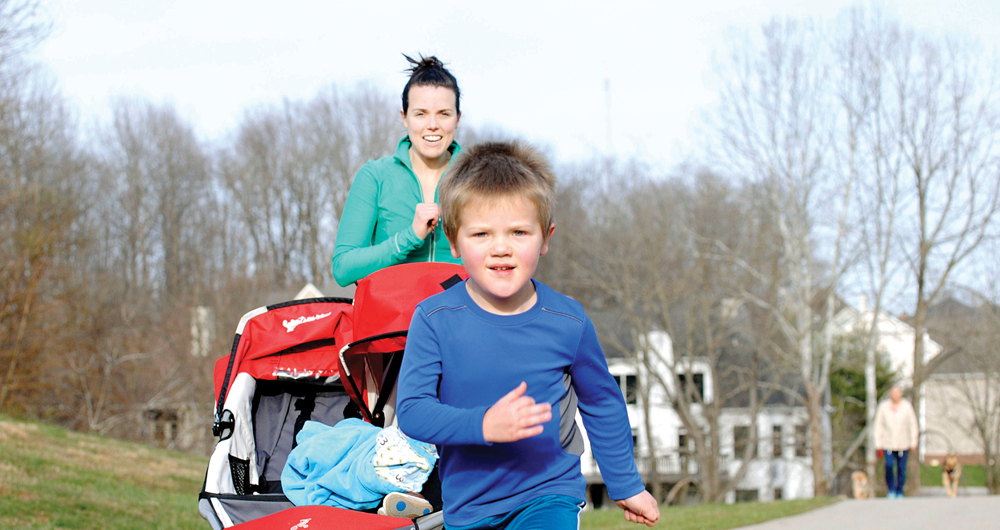
A young runner finishes up his second mile at Run for Fun practice outside of the Monroe County YMCA.
1. Check with your doctor.
There’s a reason fitness articles always include this disclaimer—getting the thumbs-up from your physician means you can push yourself and not worry. “Instead of asking your M.D. if exercise is safe, ask how you can maximize your ability to train,” suggests USA Triathlon certified coach Sue Aquila.
2. Select a training program.
“Most people don’t take lessons to run,” says Annie Eakin, who coaches 6- to 12-year-olds for the Monroe County YMCA Run for Fun program. But they really should. “Mostly, it’s a matter of building up endurance.” Eakin suggests doing what she does with the kids—start with a walk/jog plan and gradually add more running. Couch-to-5k programs are easily found online.
3. Take it down a notch.
If you’re an overachiever, you may have more success if you try to do a little less. “Under-promise and overdeliver,” Aquila suggests. “Pick a program you think is less than you should be doing. If you are a beginner, pick the easiest beginner’s program. If you think you are advanced, pick an intermediate program. Then nail the program with consistency.”
4. Find your tribe.
Train with other runners, advises Margie Kobow, director of the Monroe County YMCA Endurance Training Group. If you are a novice, “being part of a group means being with people who have been out there and have run considerable distances.” Take advantage of their experience—ask questions about everything from what they eat on race day to the locations of the best restrooms on your running routes.
5. Do something every day.
“I used to run seven days a week, but I found my knees didn’t like it,” says Janet Delong, a physical therapist and owner of Delong Wellness. So Delong started cross training, doing aerobic activities other than running. “What I found was that my running got better. I run three days a week now, and I have more balance and more strength, and I don’t get injured.” Strength training, too, should be part of any running program.
6. Listen to your body.
“Don’t have hard and fast goals for mileage,” Delong says. “Be aware of how you feel. When you can adjust according to what your body is telling you, that’s success.”
7. Don’t forget to rest.
“When there is a niggle, take a rest day. Or two,” Aquila advises. “Most running injuries can be fixed with just some simple rest.”
8. Reward yourself.
“If you set a goal and you meet it, you deserve a reward,” Kobow says. “For some people, just finishing the race and getting the medal is reward enough.” Aquila adds, “Take pride in the effort and the work it takes to reach the finish line.”

Three runners pause for a photo after completing their first lap around a mile long track during practice at the Monroe County YMCA.


